The Ultimate Commuter Bike Guide
Author: Darren Mallard Date Posted:8 March 2022
To help you make the right decision when choosing your next commuter, you may refer to this article.
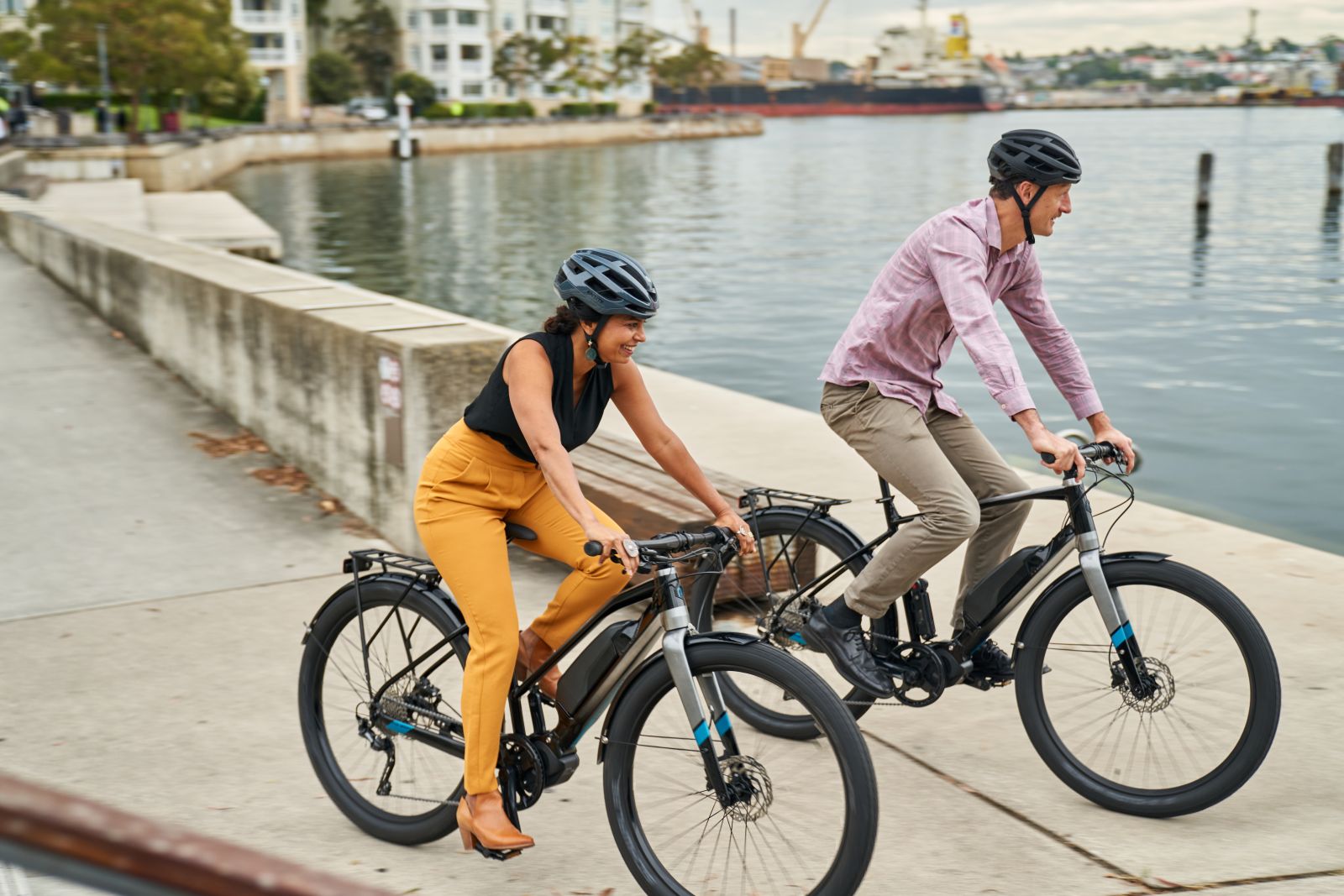
Commuting to and from work can have multiple benefits for the environment, mental health and physical health. Say goodbye to sitting in your car and waiting to move at peak hour, say hello to the wind flowing through your hair as you cruise past the cars. More time outside taking in the sunlight, breathing in the fresh air and clearing your mind greatly affects your mindsets.
And, of course, pedalling in and out is a great way to get your physical exercise in if you have limited time.
There are so many options to consider when you are looking to begin commuting. Will a Flat Bar Road bike suit you more than a Hybrid Bike? Will a Gravel Bike be better than a Road Bike? Or, will an E-Bike suit you more? Let's get into it and get you riding to work on the best bike from Bicycles Online.
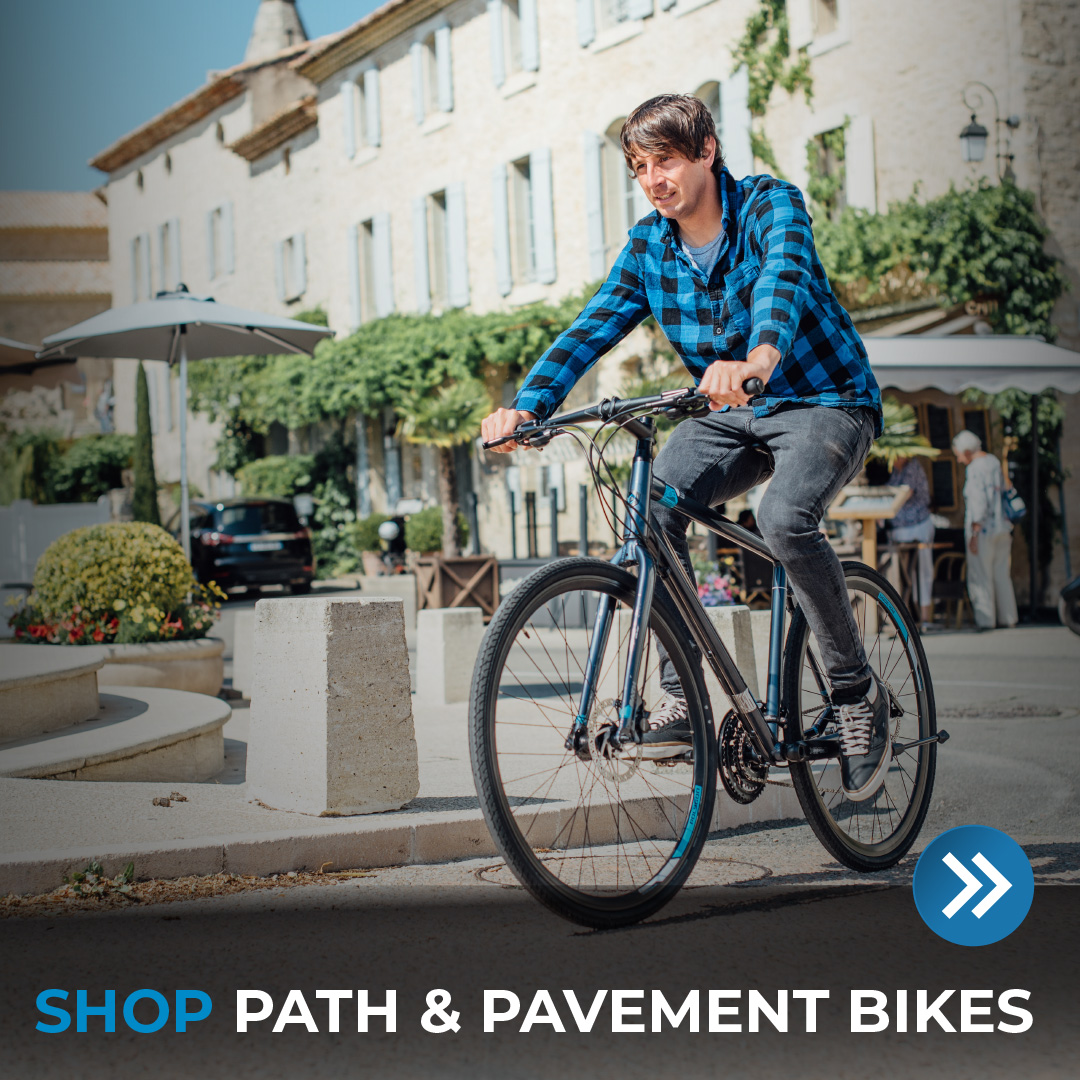
Terrain, time and distance
The first step to buying any bike is to determine what terrain you will be riding on, how long you will be riding for and how far you will be riding. For commuting, comfort and efficiency are the key factors to consider when choosing a bike to commute on.
When looking at your terrain for commuting, you want to be as comfortable as possible without losing efficiency. You don't want to be on a stiff performance road bike with narrow tyres if you are riding on rough roads or gravel. If you are on a big mountain bike but riding smooth roads, the lower efficiency will drag out the ride longer and may not be as enjoyable.
Efficiency refers to how easy it is to maintain speed on a bike. As mentioned above, often greater efficiency translates to less comfort. Things like larger tyres and suspension weigh more, create drag and make every ride longer or harder.
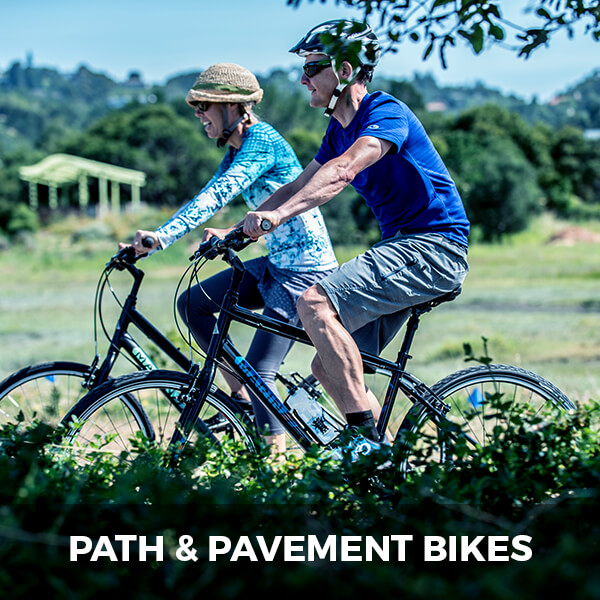
Longer rides on rougher roads will take longer, so comfort may take priority. Smoother short rides are better on efficient bikes. As we know, many rides to work can have terrains of all types in one ride. That is why gravel bikes and hybrids are extremely popular due to their amazing versatility.
It is about deciding if you don't mind riding with less comfort for a shorter time or whether you would rather be more comfortable while riding longer. That is why it is key to understand your route and what it includes along the way.
Flat Bar Road
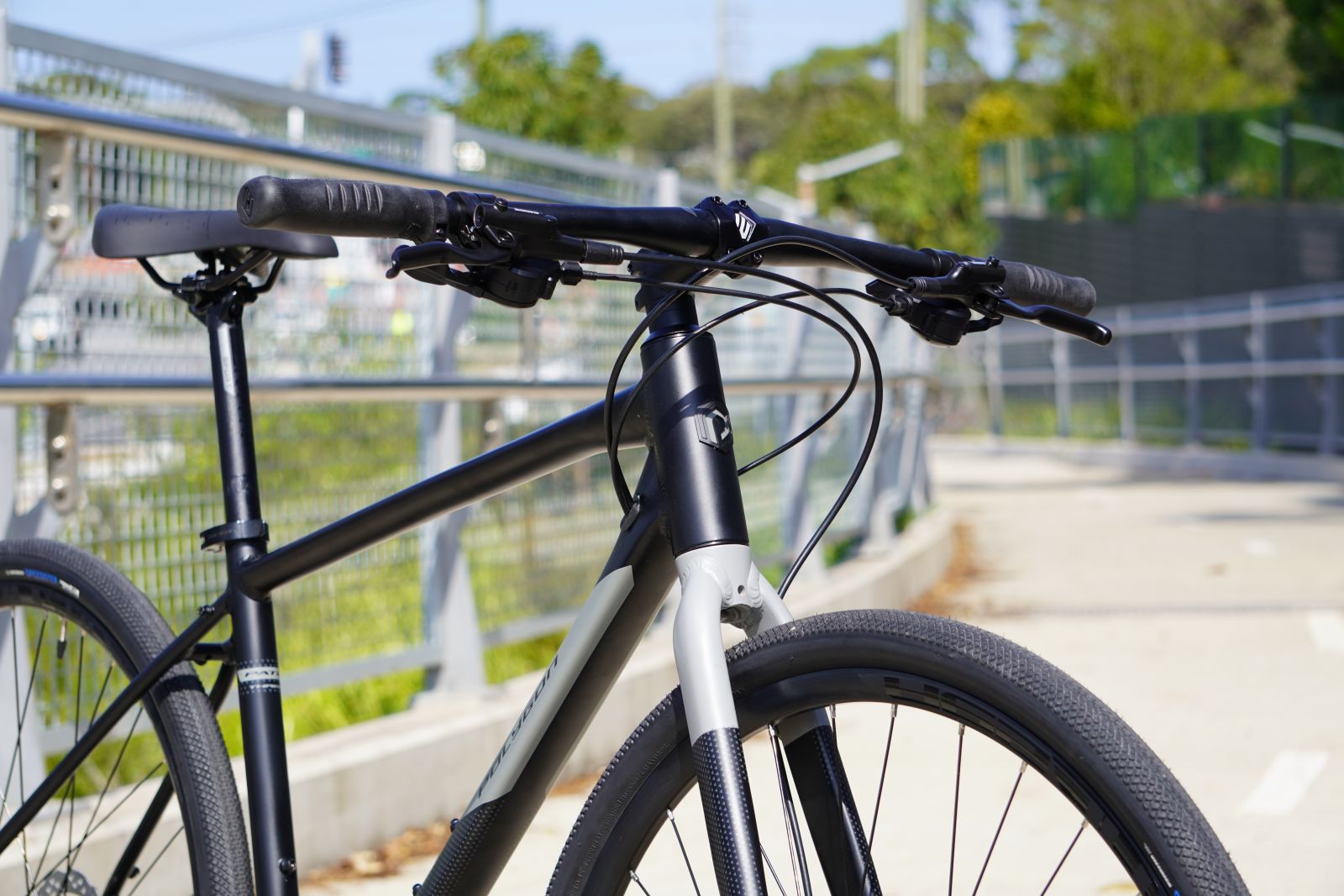
Flat bar road bikes are lightweight, fast, and agile based on their performance road bike cousins. These bikes are often designed to enhance speed and efficiency over comfort and durability. These bikes are perfect for riders looking to add some zest to their ride.
The biggest differences between flat bar road bikes and standard road bikes are the bars. The flat bars on these bikes are simpler, provide conventional cockpit controls, and offer a more upright riding position. Perfect for smooth roads and those looking to cover more ground fast.

A more standard urban or commuter bike is heavier, has a relaxed riding attitude, and has fatter tires for more comfort. Because the flat bar road bikes have narrower tires and stiffer frames, riders will feel more feedback from the road. If you want more comfort, look at a commuter bike; if you want more speed and agility, look at a performance road bike.
Hybrid
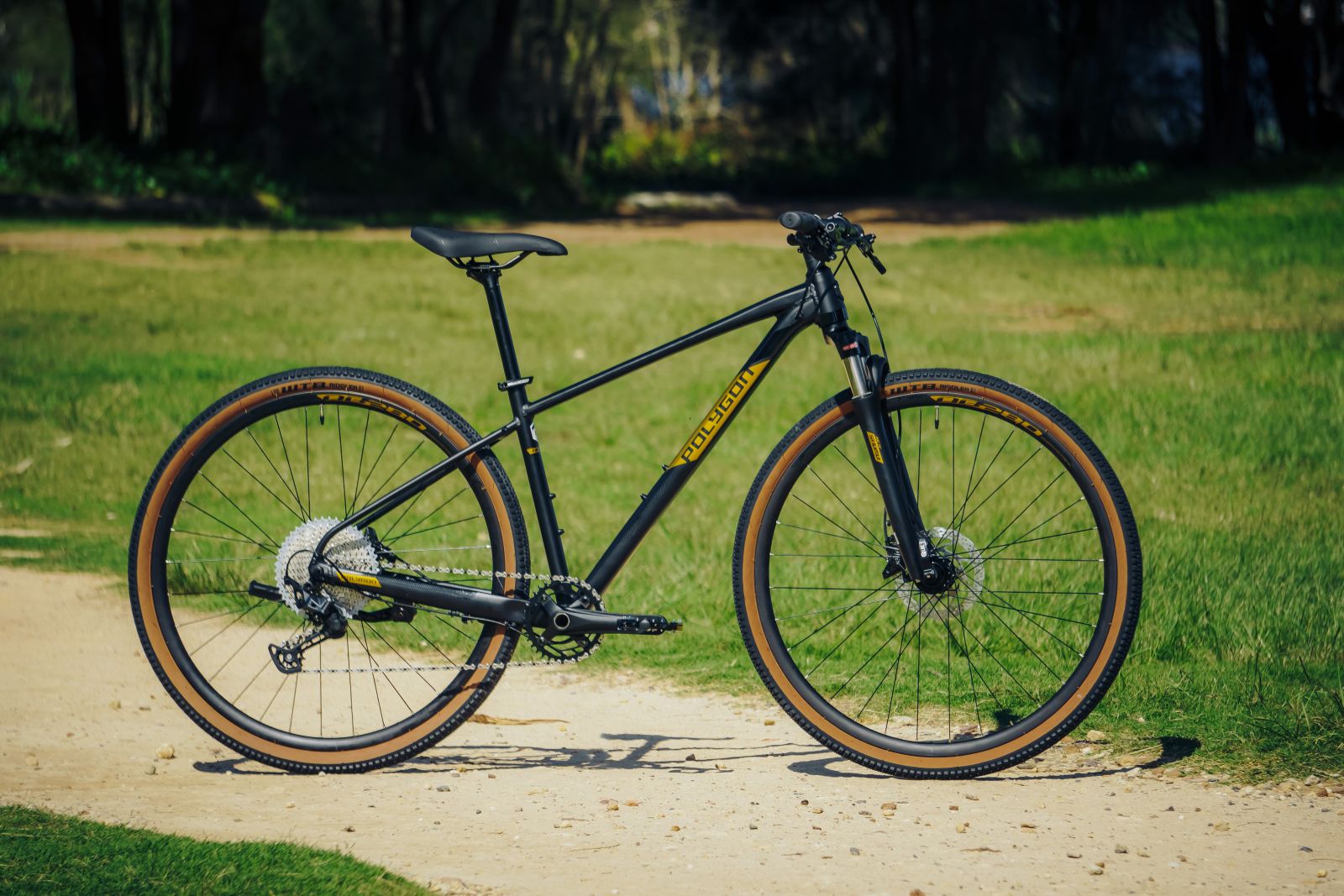
Hybrid bikes are a mix of a commuter bike, a gravel bike, and a mountain bike. They take the benefits of all three styles and throw them into a blender. Comfort, efficiency, and durability are the three main ingredients of a hybrid bike.
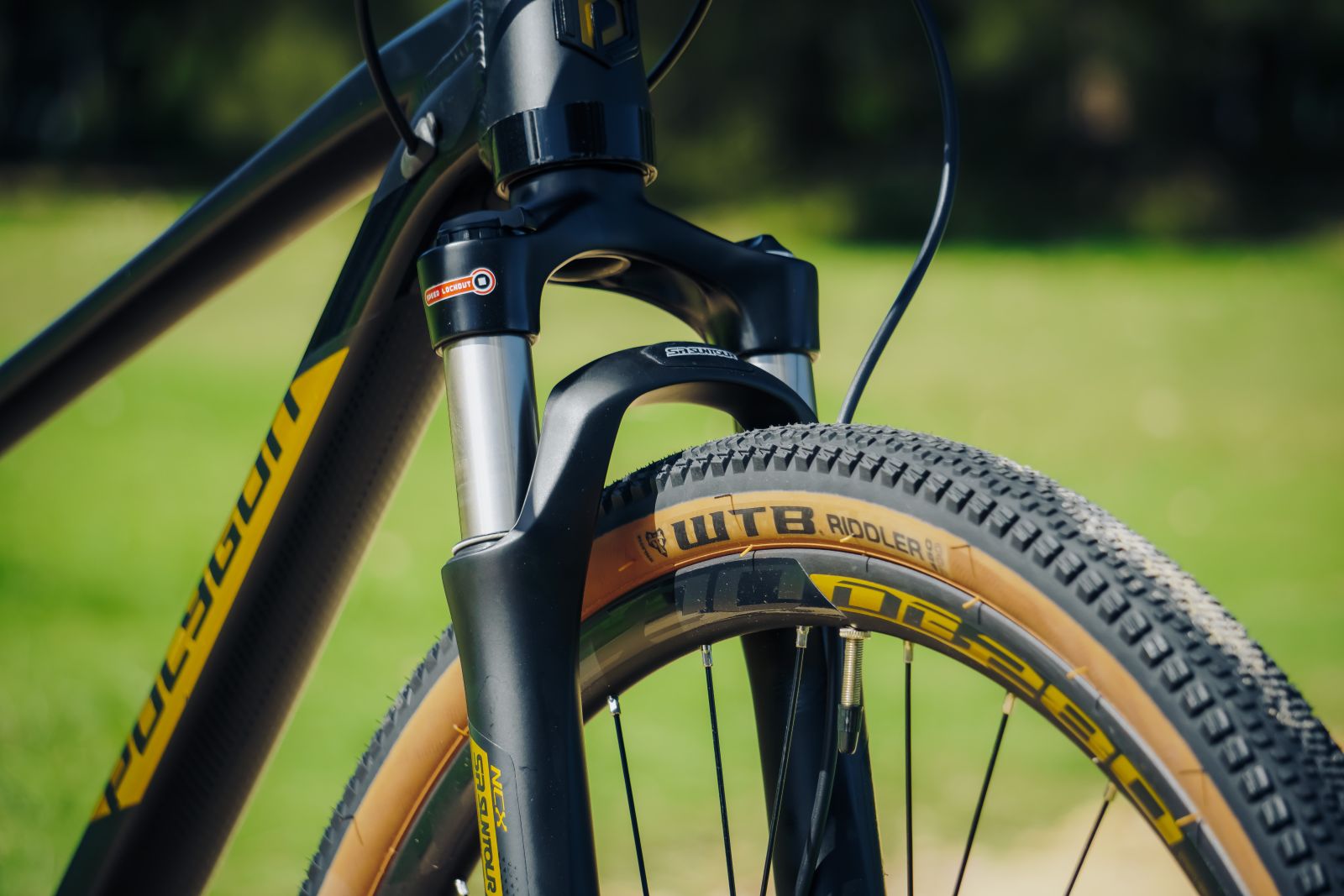
Hybrids will have semi-slick tires to provide grip on a loose surface and speed on a smooth surface. The front of the bike is tall, and you often have ergonomic grips to raise your riding position while providing comfort through your hands. The 60-80mm travel offers some shock absorption for the unseen pothole you will inevitably hit. Finally, an MTB-style frame is strong and has plenty of mountings for rack and barriers.
Hybrids have all the required mountings for mudguards, bags and racks. Using racks and packs to get your luggage off your back will lead to less sweating or extra stress on your back. They make getting clothing or books on and off your bike much easier to get in and out.
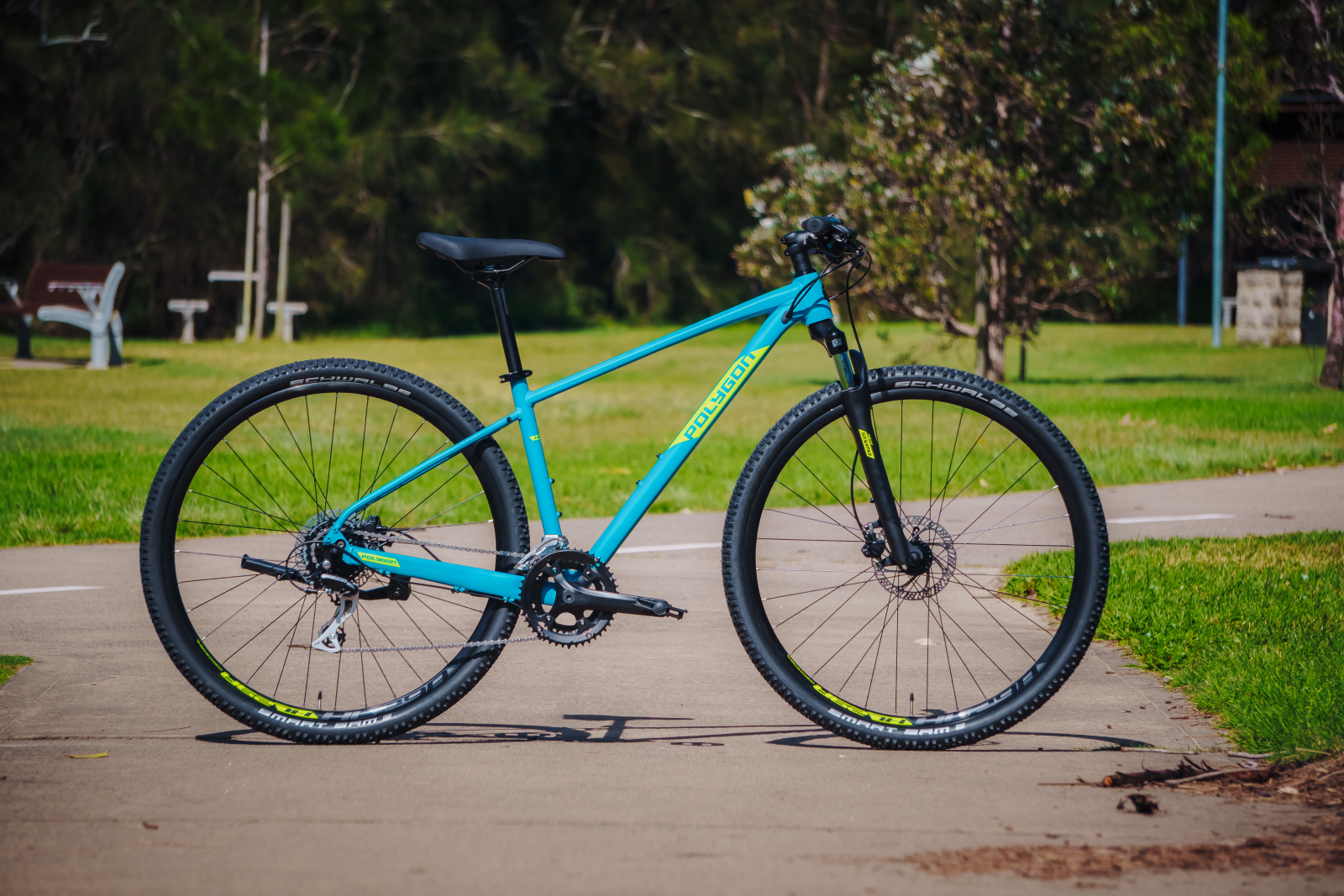
While it may resemble a mountain bike, the hybrid is designed for light off-road use and shouldn't be taken down any trail that gets too crazy. They are more efficient than an MTB and less efficient than a flat bar or commuter. They are the perfect bike for those who ride mixed terrain and use their bike for everyday chores.
All Road
(1).jpg)
If you just want a bike to ride on the road, explore further than you have been before, or just enjoy a ride along the coast, an all-road bike will suit you better. While only slightly heavier than the "race" bikes above, the stability and comfort are miles better.

Alloy all road frames have all the required mountings for mudguards, bags and racks. Using racks and bags to get your luggage off your back will lead to less sweating or extra stress on your back. They make getting clothing or books on and off your bike much easier to get in and out.
(2).jpg)
The bikes are more comfortable with fatter tires, a wider gear range, and a more upright riding position. However, All Road bikes are designed to remain fun and agile. They really blend everything to provide the best overall package for those looking to ride a bit of everything. If you are looking for something more comfortable and burly, a gravel bike may be for you.
Gravel
Gravel bikes are the next level of all road bikes, designed primarily for exploring off the sealed path and deep into nature. With bigger tires, up to 45mm wide, wider handlebars, geometry optimized for stability, and many comfort features, this style of bike is extremely versatile.
While most gravel bikes arrive with semi-slick tires (knobs on the outer edges), you can change them to fully slick for the road or fully knobbly when the terrain gets loose. Because of the comfortable riding position and relaxed geometry, they make great commuters or for long adventures. However, the geometry will never make a gravel bike feel as agile as a performance road bike.

With high-volume tires that are knobbly, you can ride rough roads in comfort. While they are designed for mountain bike tracks, they hold speed exceptionally well on backcountry tracks or routes that would destroy conventional road bikes. If you are looking to explore places well off the beaten path and may get rowdy, gravel bikes are for you. To get even more comfort and reliability, a touring bike may be better suited.
Hardtail
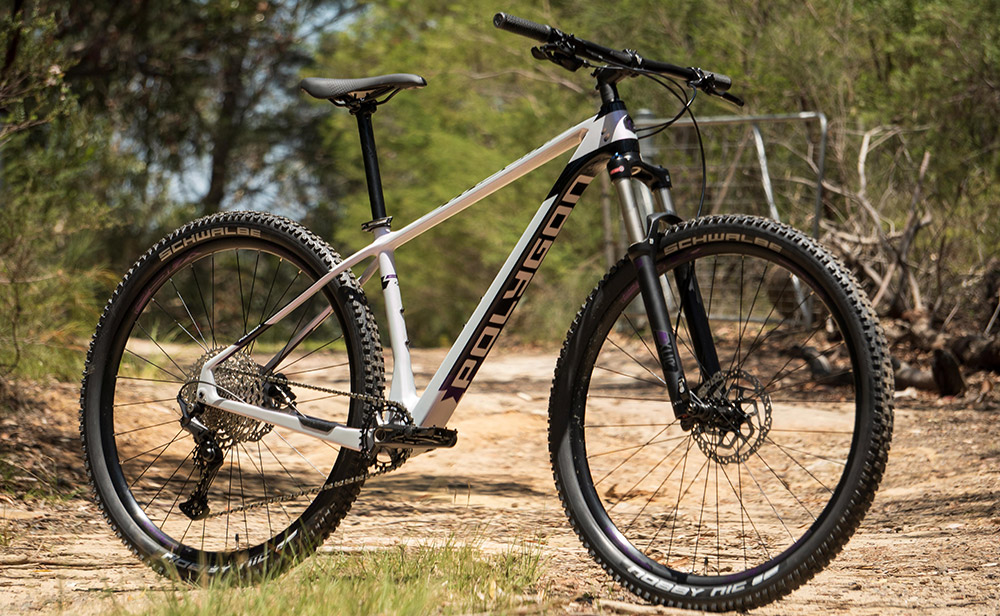
While hardtails are mountain bikes, they are a popular option for commuters thanks to their comfort and robustness. 29-inch hardtails are like the big brothers of urban bikes. Big 2.25 inch tires, 100mm of travel, and relaxed, stable geometry. While they may be more robust and comfortable, they can be slower due to the extra rolling resistance and weight.
.jpg)
Hardtails are perfect for those commuting through the mountains and like to add some extra adrenaline to their commute. Lightweight carbon XC bikes aren't much heavier than alloy gravel bikes, but you may not want to bump up a frame that costs more.
.jpg)
Alloy hardtail frames have all the required mountings for bags and racks. Using racks and bags to get your luggage off your back will lead to less sweating or extra stress on your back. They make getting clothing or books on and off your bike much easier to get in and out.
Want something lighter but with similar benefits? Check out the hybrid bikes.
Comfort
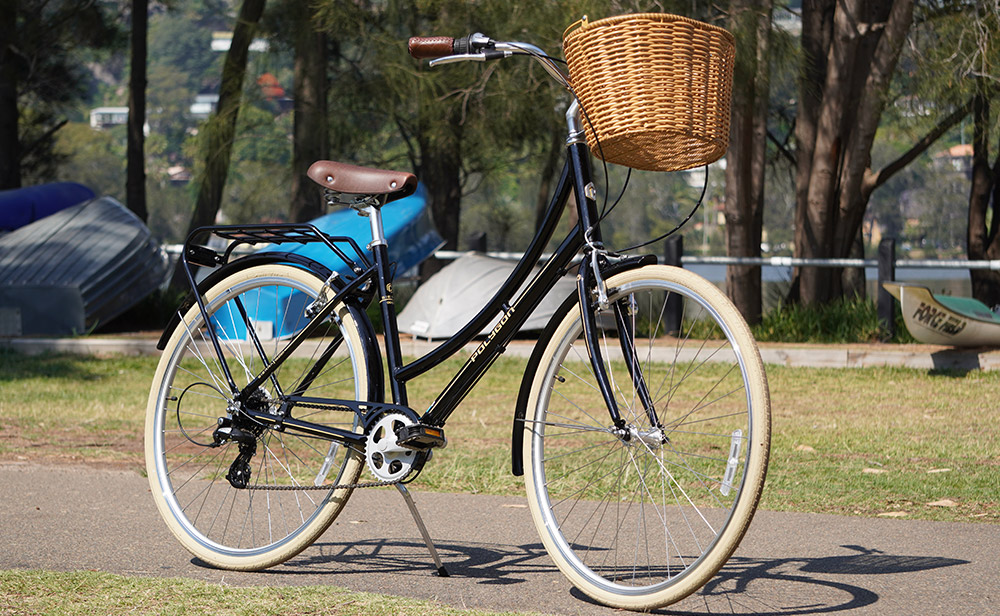
Many riders are happy to sit up and relax as they cruise down the coast or through the parks. Comfort bikes are created on the same foundations that make bikes in Holland so popular. They include an upright riding position, a comfortable seated position, and ergonomic controls. You may not be able to ride at hyper speed on these bikes but, you will enjoy the scenery and experience much more deeply.
Ebike
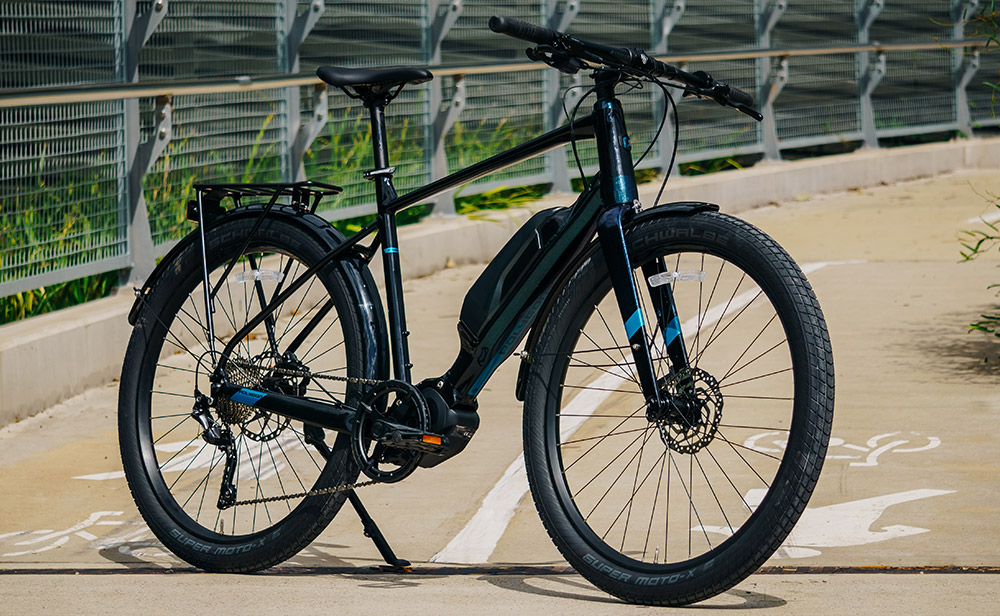
E-Bikes are the biggest growing market in the world of cycling at the moment for a good reason. Riders can go further, fast, and with much less effort, taking everyday riding and boosting the experience tenfold. With the E-Bike scene booming, the bikes are becoming more refined, and bicycles are becoming more specific to each user. In this blog, we take you through the different styles of bikes and how they benefit.
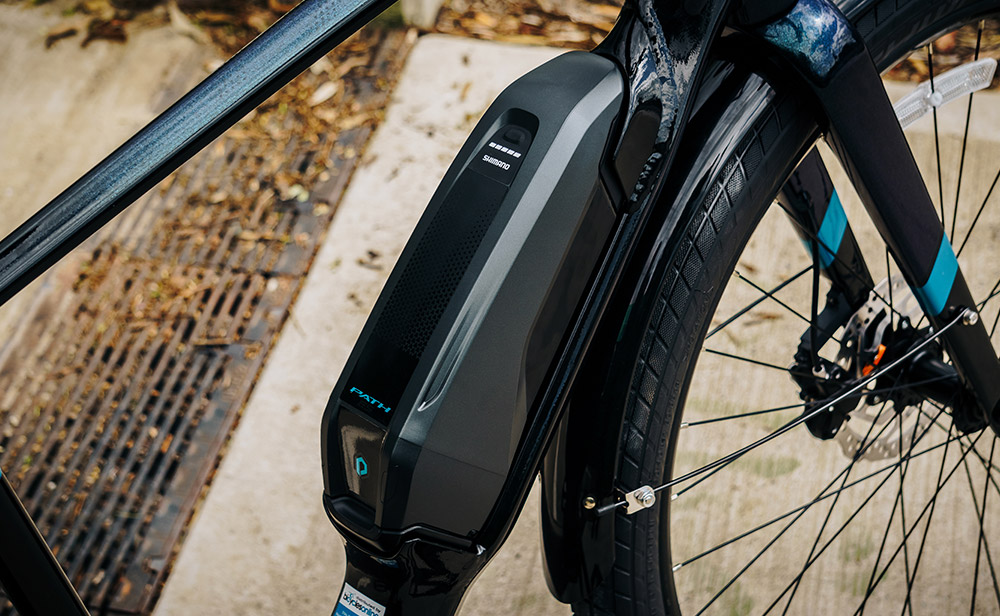
Riding bikes uphill to go back down is a massive chore to some. Grinding up hills slowly can be mundane and unenjoyable on some bigger travel bikes. It is inescapable. E-Bikes transform big-hitting bikes into spritely mountain goats on the ups. Climbing now takes skill and attention as you are hitting corners, roots, and rocks much faster. While it may seem lazy, this new way of climbing requires more physical effort from your entire body and provides a new challenge. For those who want to cruise up and enjoy the downs, that is perfectly fine as well.
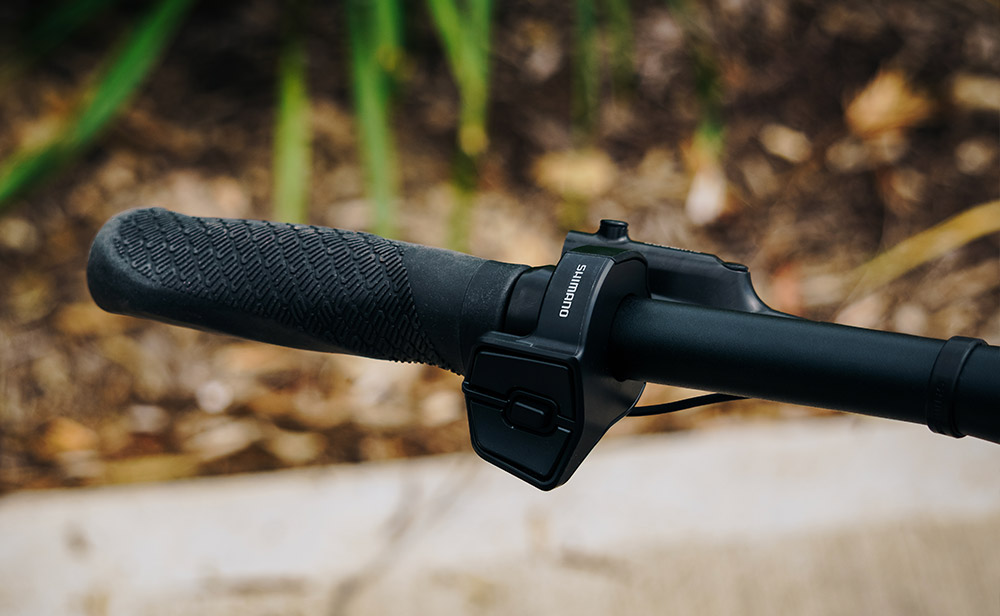
Commuting on a flat bar, hybrid or hardtail is just about as easy as driving the car. Alloy allroad frames have all the required mountings for bags and racks. Using racks and bags to get your luggage off your back will lead to less sweating or extra stress on your back. They make getting clothing or books on and off your bike much easier to get in and out.
The motor makes the weight feel non-existent. In fact, some people replace their 2nd car with an E-Bike because they are so easy to use and can carry more. They are the perfect bike for people who work far from home or have a hilly commute. It also provides a platform for people that may not be as fit as they once were. You can enjoy riding with less effort and still get in exercise.
Component Breakdown
SLX
SLX is basically the most value you can get for your money if you’re a performance-oriented mountain biker who doesn’t want to break the bank. This is a durable group built to be abused, much like the Shimano 105 in the road biking groupset hierarchy.
SLX is aimed towards serious mountain bikers or off-road riders (such as bikepackers), who can get it with a 1x or a 2x crankset. SLX is slightly heavier than XT or XTR groups but offers similar shifting performance.
105
The 105 groupset is by far the most popular and the most prevalent groupset among fitness road cyclists and amateur racers. The newest R7000 series has been improved with trickle-down technologies from Ultegra and Dura-Ace in both aesthetics and mechanics.
This group is Shimano’s workhorse, intended for fitness, recreation, and competition. It offers the best value for the money. This is an 11-speed group, available with disc and rim brakes, and only compatible with drop bars.
The cranks are very similar to those on Ultegra, available in three options (54-39, 52-36 or 50-34) and compatible with 11-30 to 11-34 cassettes.
Deore
Deore is the first groupset that offers a clutch-enabled rear derailleur which makes it the cheapest group marketed toward real mountain bikers. At the moment, there are three Deore series—M4100, M5100, and M6100—with 10, 11, and 12 speeds, respectively.
Deore is reliable, durable, well-built, and shares numerous mechanical and design features with more expensive SLX and XT groups. It is often seen on mountain bikes that cost around $1,000. The M4100 and M5100 series can be ridden as 1x or 2x setups, whereas the M6100 series comes as a 1×12 setup.
Alivio
Alivio is the best you can get from Shimano’s groupsets intended for beginner and recreational riders. This group is intended for off-road use, but it’s still considered entry-level. It’s substantially more rust-resistant than a cheaper groupset and offers a lot better shifting performance and feel.
However, it also has some major limitations compared to its more expensive siblings. For example, it lacks a clutch and only offers 2×9 and 3×9 gearing options. That’s why serious riders steer clear of it, but recreational riders will find the best bang for the buck in it. The Alivio group also includes V-brakes and hydraulic disc brakes.
Tiagra
In terms of shifting and aesthetics, the latest Tiagra 4700 sits very close to the Shimano 105 group. However, Tiagra is still a 10-speed group built from more robust materials, which increases its overall weight. Shimano classifies it as a Sports/Fitness/Endurance group and does not recommend it for competition.
The latest model is upgraded with cascaded technology from Dura-Ace and the brakes are now 30% more powerful than before. Tiagra can be used as a 2x or a 3x setup, with drop bars or flat bars, and offers both rim and disc brake options.
Acera
The Acera groupset is very similar to Altus in appearance, the number of gears, and the intended use. It’s usually available with 3×8 or 3×9 drivetrains, as well as with a 2×9 setup.
Acera is the group where we start seeing more aluminum instead of steel. This brings the weight down and increases durability thanks to aluminum’s rust-free features. It includes hydraulic disc brakes, but it is still not considered a proper off-road training group.
Sora
The Sora groupset received an overhaul in 2017 with new shifters, brakes, and redesigned rear derailleurs that now look more like higher-end groups. Sora has adopted some technology from higher level groupsets as well, so the R3000 series offers smooth and reliable shifting. It features 9 speeds on the cassette (up to 11-34), paired with a 2x (compact) or a 3x crankset. Its only downside is the 9-speed setup that leads to bigger jumps between gears.
Claris
Claris is Shimano’s entry-level group intended for beginner and recreational riders. It comes with a 2×8 drivetrain, but there’s a 3x crankset option available as well. The latest R2000 series includes dual-pivot brake calipers, with no disc-brake options available. Claris is the heaviest group as well, using steel, heavy alloys, and plastic in manufacturing.
Wrap up
All of these bikes are up to commuting and can be used on the weekend for fun. It is advised you don't overestimate the distance, terrain or efficiency you require. If you overestimate or underestimate, you may end up on the wrong bike for your needs. If you still have any questions, reach out to our experienced customer service representatives via email, phone or live chat for any extra help
 AUS
AUS USA
USA




.jpg)
























